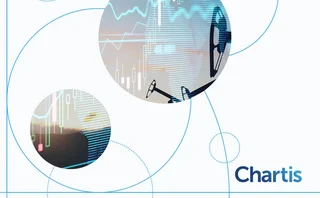
Coal house of the year, Asia: Tata International Singapore
Energy Risk Asia awards, 2018: Vietnamese deal puts Tata International Singapore on the map

For Tata International Singapore (TIS), it was the deal that showed they had arrived: in 2017, it became the first international company to win a contract to supply thermal coal to EVN, Vietnam’s state-owned electricity monopoly.
“It helped put us on the map internationally,” says Singapore-based Sabyasachi Mishra, global head of sales. It also demonstrated the capability of Tata’s still youthful trading arm with the initial deal – a supply contract for 1.2 million tonnes that covered some four months of EVN’s requirements – being followed by two more supply contracts that brought the total volume to three million tonnes.
The unit was launched, with Mishra as the first employee, in late 2011 in recognition of the risks that India’s giant Tata group was running as a large consumer of coal and other minerals – as well the opportunities presented in providing trading and risk management services to its customers.
“We appreciated that we’d come late, and that a lot of other trading entities had been formed by that time, but we thought that with the size of the parent business, and the trust element [associated with the Tata name], there could be a growth story,” says Mishra.
Just seven years later, TIS has expanded into a 50-strong team, based largely in Singapore and India but with sales and origination offices in Indonesia, China, South Africa and Vietnam, and with a turnover in excess of 10 million tonnes of coal a year.
The initial EVN transaction is illustrative of some of the challenges faced by coal traders such as TIS. The biggest issue was the shallow port at EVN’s DH3 power plant, meaning that the coal had to be transferred from a larger vessel offshore onto smaller barges. “That was the first time we had carried out such a transshipment operation – it was a considerable logistical challenge.”
In addition, TIS faced some price risk on the trades, given that it tends to buy coal at fixed prices, while the tender is based on the globalCOAL NEWC Index, which provides a benchmark price for seaborne thermal coal in the Asia-Pacific.
We appreciated that we’d come late, and that a lot of other trading entities had been formed by that time, but we thought that with the size of the parent business, and the trust element [associated with the Tata name], there could be a growth story
Sabyasachi Mishra, Tata International Singapore
“Compared to other commodity derivatives markets, coal is considerably less liquid,” notes Mishra, estimating that the notional size of the derivatives market is roughly equal to the physical, in contrast to Brent crude or West Texas Intermediate crude oil derivatives, for example, where this ratio is around 100-to-one. “We do face challenges to cover our positions, particularly when we’re trying to cover a large quantity: we may have to pace it out over a few days. We’re definitely taking on some risk there.”
However, as the market matures, “the tools are becoming more and more available”, he adds, noting that the recent introduction of the ICI 4 weekly assessment – produced by Argus and Coalindo Energy to track Indonesian physical coal prices – has facilitated an over-the-counter swap market for Indonesian coal.
“Newcastle, API 4 [which references the price of coal exported from Richards Bay, South Africa] and now ICI 4 are the three main swaps in which we dabble – they represent the main locations where we have most of our ontakes.”
However, basis risk is a fact of life in the coal market, as Mishra adds: “Fundamentally, you have to build it into your margins.”
Similarly, shipping represents a major risk, particularly given recent volatility in oil prices. However, TIS is able to rely to a large extent on sister shipping companies within the Tata group. “They take care of the volatility but, as we grow bigger, it’s an area where we would like to take positions in terms of time or period charters, and we’d have to look to hedge some of those risks.”
Mishra adds that one of TIS’s strengths is the unusual ability to provide clients with risk management services, for example around price risk. “We give the client the option to give us a call and we’ll give him a number at which he can switch to a fixed price.”
Of course, as the world increasingly acknowledges the risks of climate change, question marks hang over the future of coal for power generation. “We recognise there are negatives around coal in terms of long-term planning,” says Mishra. “We are working to expand our portfolio beyond thermal coal, into base metals, steel raw materials, and we see a growing need for coking coal used in steel production,” he says.
“But on the [thermal] coal side, we do continue to see an immediate need for coal for baseload power for the next 10 years or so, before green energy takes charge. Beyond 10 years, we need to look at alternative products.”
Only users who have a paid subscription or are part of a corporate subscription are able to print or copy content.
To access these options, along with all other subscription benefits, please contact info@risk.net or view our subscription options here: http://subscriptions.risk.net/subscribe
You are currently unable to print this content. Please contact info@risk.net to find out more.
You are currently unable to copy this content. Please contact info@risk.net to find out more.
Copyright Infopro Digital Limited. All rights reserved.
As outlined in our terms and conditions, https://www.infopro-digital.com/terms-and-conditions/subscriptions/ (point 2.4), printing is limited to a single copy.
If you would like to purchase additional rights please email info@risk.net
Copyright Infopro Digital Limited. All rights reserved.
You may share this content using our article tools. As outlined in our terms and conditions, https://www.infopro-digital.com/terms-and-conditions/subscriptions/ (clause 2.4), an Authorised User may only make one copy of the materials for their own personal use. You must also comply with the restrictions in clause 2.5.
If you would like to purchase additional rights please email info@risk.net
More on Energy
ETRM systems 2024: market update and vendor landscape
This Chartis report evaluates energy trading and risk management systems that provide front-to-back, asset class-specific and geography-specific coverage, and considers the full energy trade lifecycle
CTRM systems 2024: market update and vendor landscape
A Chartis report on commodity trading and risk management systems that considers its different applications and addresses the market and vendor dynamics to determine the long-term and structural impacts of the overarching market evolution on the…
Energy Risk Commodity Rankings 2024: markets buffeted by geopolitics and economic woes
Winners of the 2024 Commodity Rankings steeled clients to navigate competing forces
Chartis Energy50
The latest iteration of Chartis’ Energy50 ranking
Energy trade surveillance solutions 2023: market and vendor landscape
The market for energy trading surveillance solutions, though small, is expanding as specialist vendors emerge, catering to diverse geographies and market specifics. These vendors, which originate from various sectors, contribute further to the market’s…
Achieving net zero with carbon offsets: best practices and what to avoid
A survey by Risk.net and ION Commodities found that firms are wary of using carbon offsets in their net-zero strategies. While this is understandable, given the reputational risk of many offset projects, it is likely to be extremely difficult and more…
Chartis Energy50 2023
The latest iteration of Chartis' Energy50 2023 ranking and report considers the key issues in today’s energy space, and assesses the vendors operating within it
ION Commodities: spotlight on risk management trends
Energy Risk Software Rankings and awards winner’s interview: ION Commodities








